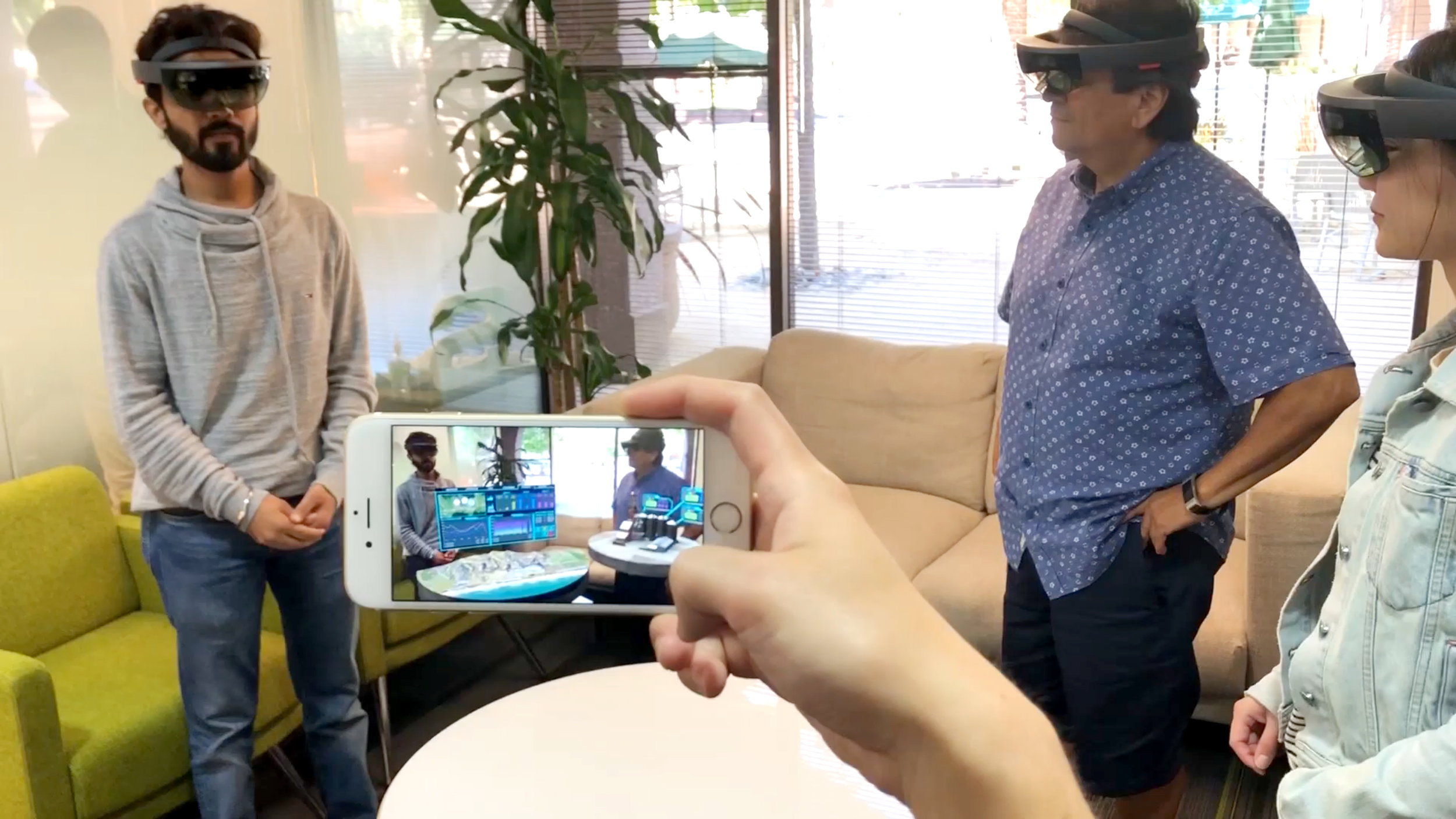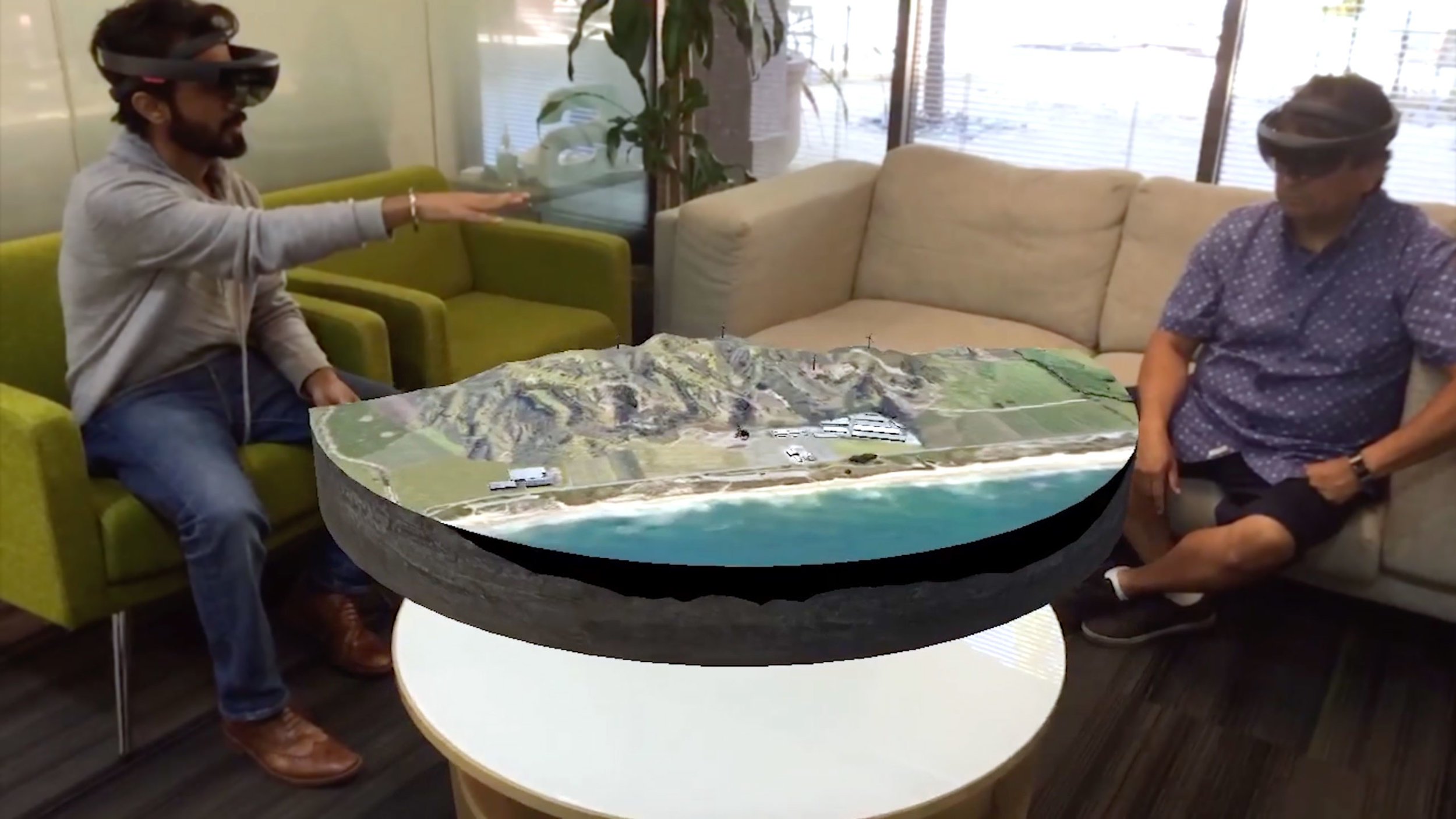Smart Farming AR
PROJECT OVERVIEW
Showcased at the Mobile World Congress 2018 (Los Angeles, CA) and Telstra Vantage 2018 (Melbourne, VIC), Smart Farming AR is 2-week rapid prototype POC and an immersive augmented reality experience which gives the user a glimpse into the future of Agriculture using IoT sensors tied to an existing farm in Hyderabad, India. Using the Microsoft Hololens, real-time data visualizations are streamed via AWS and displayed along with a digital twin representation. The Spectator view feature allows for others to share the experience on iOS devices (iPad/iPhone). Check out the feature on Infosys Insights here.
Responsibilities: Creative Lead, research and development, UX / UI, 3D modeling/animation, voice over script / audio / recording, voice over actor, video editing, Unity integration
CREDITS
Client: Telstra / Infosys
Platforms: Microsoft Hololens / iOS Devices (iPhone / iPad)
Launch Date: September 2018
Event: Mobile World Congress 2018, Telstra Vantage 2018
Promotional Video
(spectator view)
Demo Walk-Through
(1st person Mixed reality capture)
Mobile World Congress 2018 (Los Angeles Convention Center)
My colleague and I gave flash talk presentations on Smart Farming and the Future of Agriculture using IoT Sensors and Augmented Reality for data visualization. Here we are discussing the concept of a digital twin and streaming real-time data.
Photoshop Mock-up concept:
Industry / Market Challenges & Opportunities:
Over the next 40 years, world population is expected to swell to 9 billion people. The United Nations Food and Agriculture Organization predicts that in that time, global food production will need to increase by 70% in order to prevent massive famine. Simultaneously, producers must learn to cope with changes in climate, intensification of floods and droughts, depletion of resources, and dramatic political shifts. Meeting the coming demand for food will mean addressing these large challenges head on while keeping labor and production costs down.
About the Offering:
Real-Time Data and Production Insight: Farmers can visualize production levels, soil moisture, sunlight intensity remotely and in real-time. This easily accessible data accelerates the decision making process.
Increased Production: Optimized crop treatment such as accurate planting, watering, pesticide application and harvesting directly affects production rates.
Water Conservation: Weather predictions and soil moisture sensors allow for water use only when and where needed.
Lowered Operation Costs: Automating processes in planting, treatment and harvesting can reduce resource consumption, human error and overall cost.
Increased Quality of Production: Analyzing production quality and results in correlation to treatment can teach farmers to adjust processes to increase quality of the product.
Accurate Farm and Field Evaluation: Accurately tracking production rates by field over time allows for detailed predicting of future crop yield and value of a farm.
Improved Livestock Farming: Sensors and machines can be used to detect reproduction and health events earlier in animals. Geo-fencing location tracking can also improve livestock monitoring and management.
Reduced Environmental Footprint: All conservation efforts such as water usage and increased production per land unit directly affect the environmental footprint positively.
Remote Monitoring: Local and commercial farmers can monitor multiple fields in multiple locations around the globe from an internet connection. Decisions can be made in real-time and from anywhere.
Equipment Monitoring:Farming equipment can be monitored and maintained according to production rates, labor effectiveness and failure prediction.
Project Overview:
Using the Microsoft HoloLens, the user can visualize how this technology can aid farmers and agriculture investment stakeholders by giving a first-hand look at a real-time digital twin representation of a sample farm tied to IoT sensors. This information can then be filtered, organized, and presented as 3D data visualizations to help farm operators to make informed, educated, data-supported decisions. It can also be integrated into artificial intelligence and machine learning systems to provide insights, automate, and optimize efficient farm management.
IoT Sensors (in the market today):
GPS tracked cattle/self-driving tractors
water supply/silo levels
nutrient systems
water/soil pH sensors


